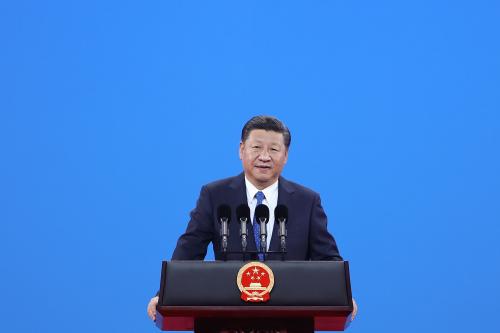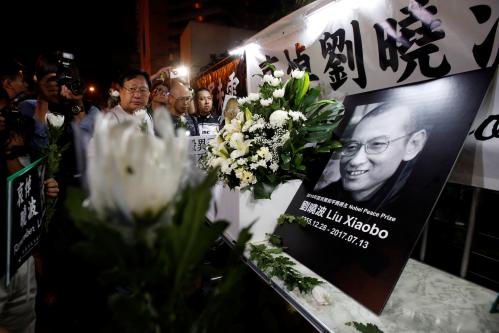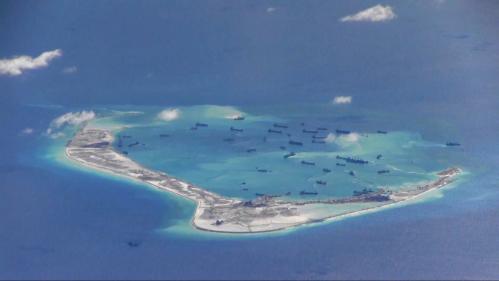In 2018 Xi Jinping shattered longstanding norms within the regime’s inner circle. In positioning himself to rule for life, Xi created enemies among the ruling elite, who were already deeply displeased by his politically motivated anti-corruption campaign. Xi now confronts profound threats from senior members of the elite. His central task is to survive them. To do so, I argue, he will craft a foreign policy that embraces diversionary aggression. That is, he will initiate international conflicts in order to build the sort of public nationalism that makes it difficult for elites to challenge him. The result will be a more aggressive, destabilizing, and unpredictable foreign policy.
China’s “rise” is among the great challenges of the 21st century, in part because China’s domestic politics compel risky behavior on the international stage. Xi’s attempts to consolidate power have made diversionary foreign policy more likely, but China’s political system itself incentivizes this behavior. Indeed, my research suggests that diversionary aggression may account for as much as 40 percent of all conflict that the Chinese government initiates with the United States.
It is critically important for U.S. policymakers to distinguish between diversionary aggression, which evaporates with the resolution of China’s domestic tensions, and revisionist aggression, in which China seeks to permanently reshape the strategic landscape in East Asia. For the United States, responding to diversion as though it were revision risks antagonizing China precisely when Xi is trying to appear tough on foreigners. This risks creating a spiral of escalating conflict. Yet responding to revision as though it were diversion also carries risk: allowing China to expand its influence in East Asia unchecked.
When does China employ diversionary aggression? How can U.S. policymakers recognize it? And how should Washington respond? Fortunately, China’s diversionary aggression emanates at specific moments and has key distinguishing features, which I discuss below. Ultimately, the U.S. government should respond to diversion with strategic restraint, and to revisionism with containment.
The reason
Why would tensions between Xi Jinping and senior government officials compel the Chinese government to initiate conflicts with the United States? Understanding this requires understanding China’s domestic political struggles, which are competitive, factional, and ubiquitous. Deng Xiaoping ousted Mao’s successor in a bloodless coup in 1978. The Bo Xilai affair scandalized the regime in 2012. And today, rumors of assassination attempts against senior leaders are common. Accordingly, Chinese presidents take steps to insulate themselves from the conspiracies of regime insiders. This is how China’s diversionary foreign policy should be understood.
Scholars have long believed that autocrats can employ popular support to inoculate themselves against elite conspiracies. This dynamic was first observed by Machiavelli, who wrote that “one of the most efficacious remedies that a prince can have against conspiracies is not to be hated and despised by the people.” When a conspirator “can only look forward to offending them, he will not have the courage to take such a course.”
Machiavelli’s observation has special implications for China, where the population is widely regarded as nationalist. Citizens express high support for the government in international conflict scenarios. For instance, when presented with a hypothetical dispute over the Diaoyu Islands, Chinese survey respondents overwhelmingly support not only Chinese defense of the islands against Japan, but even Chinese invasion of the islands. International crises enable leaders to showcase their competence and cue an “us-versus-them” dynamic that fosters national solidarity and, in turn, domestic support. Domestic support protects Xi against dissatisfied elites, who recognize that toppling a popular leader would invite a backlash.
In short, diversionary aggression is an investment. When elites are dissatisfied, Xi can employ diversionary aggression to cue nationalism among Chinese citizens and so inoculate himself from elite conspiracies.
Diversionary aggression is an investment. When elites are dissatisfied, Xi can employ diversionary aggression to cue nationalism.
Evidence
How do we know that diversionary aggression is a critical element of Chinese foreign policy? China’s unique political economy enables us to measure just how much of the conflict that China initiates toward the United States is diversionary.
The Chinese regime is underpinned by an autocratic social contract: In exchange for loyalty, elites expect the regime to compensate them. In the early 1990s, Deng Xiaoping transformed China’s emerging equity markets into a massive patronage system. To reward loyal supporters, Deng appointed them to senior positions at state-owned enterprises about to go public. There, they could purchase ownership shares prior to the IPO. Because initial share prices were dramatically undervalued, this constituted a massive arbitrage opportunity. Since the 1990s, the Shanghai Stock Exchange (SSE) has served primarily to reward elites.1 To reassure them, Chinese leaders have repeatedly pledged to protect elite investments in the stock market. In contrast, there is virtually no connection between stock returns and public interests. In 2011, only 9 percent of Chinese households invested in the SSE. Strikingly, the SSE has no relationship with growth, inflation, or unemployment, and so there is no evidence that SSE shocks foster popular discontent.
To explore the relationship between elite welfare and China’s foreign policy more systematically, I created a day-level dataset of over 3,000 bilateral interactions between the United States and China from 1990 to 2010 by coding some 10,000 pages of primary and secondary historical materials.2 Controlling for a range of features,3 I find that when the SSE declines by 5 percent to 15 percent, the Chinese government is twice as likely to initiate disputes with the United States. This level of volatility is extraordinarily common. It occurs in three of every 12 months.
Two other features of China’s diversionary aggression suggest that its key objective is to cultivate public support. First, it is routinely accompanied by propaganda that broadcasts to senior government officials just how popular the regime is: how its chief aim is to advance public welfare. The People’s Daily is the regime’s flagship propaganda newspaper. Its principal function is to communicate regime doctrine to elites. When the SSE declines, the People’s Daily covers “party-mass relations” (dangqun guanxi) much more positively. The size of the difference is equivalent to the difference in how positively Fox News covers Democrats versus Republicans. In short, when elite interests suffer, the regime’s propaganda apparatus informs elites that it is widely supported by the public.
Second, China reliably undertakes diplomatic charm offensives after episodes of diversionary aggression. For China, diversionary aggression is risky. The United States might mistake it for a genuine attempt to revise the power balance in East Asia and respond with containment policies. Accordingly, whenever China employs diversionary aggression, it quadruples its diplomacy the following month. Critically, this diplomacy is virtually always private, since Chinese citizens might view more public forms of cooperation with the United States as capitulation to the foreign adversary so recently demonized.
Newly released diplomatic cables provide a unique opportunity to observe this process in action. Between January and July 2010, the SSE lost one-third of its value. A range of evidence suggests that this crisis profoundly shaped Chinese foreign policy towards the United States. In March, U.S. policymakers were subjected to a “lengthy presentation” on China’s rights in the South China Sea, which were described as a “national priority.” Chinese propaganda reported that bilateral relations were “strained” and “at a low point.”
Simultaneously, the editor of the Global Times, the government’s most nationalist state-run newspaper, told U.S. Ambassador John Huntsman “not to be concerned” because China’s belligerence was “necessary to satisfy the Chinese people.” Huntsman reported to Washington that “over the coming months, China would stomp around and carry a small stick.” “This attitude,” he advised, “has more form than substance and is designed to play to Chinese public opinion.”
In July 2010, the SSE stabilized, and the economic interests of Chinese elites recovered. China quickly backpedaled.4 Chinese officials accepted a longstanding offer for President Hu to visit Washington, agreed to support a U.N. Security Council statement condemning North Korea, reauthorized military exchanges with the United States, said they had not authoritatively called the South China Sea a “core interest,” and told US officials they were “willing to begin expert talks on a code of conduct in the South China Sea.” State Councilor Dai Bingguo even traveled to Pyongyang on a secret mission on behalf of the United States to warn North Korea not to respond to South Korean military exercises.
China ensured that these signals were correctly interpreted by American policymakers. Organization Department Minister Li Yuanchao told National Security Adviser Tom Donilon that China “would not challenge the United States for global leadership” and that “there was no inevitable conflict in their interests.” China’s private behavior during this period offers additional clues that its aggression was diversionary rather than revisionist. Despite headlines proclaiming that China was “incensed” with American “containment,” Beijing agreed to help with an Iran resolution at the United Nations, on one condition: that it could keep its assistance private.
Why this matters
In attempting to secure near-dictatorial powers, Xi has created enemies among the Chinese elite. Financial crises and political purges create incentives for elites to oppose Xi. Some will try to remove him. To inoculate himself against their conspiracies, Xi will employ diversionary foreign policy even more frequently than past generations of Chinese leaders, for whom such incentives motivated 40 percent of conflict initiation with the United States, my estimates suggest.
For the U.S. government, of course, this creates a dilemma. It is almost certainly better off ignoring China’s diversionary conflicts. As the cables above make clear, the Chinese government has no interest in pursuing these crises beyond saber-rattling, and so forbearance is ultimately relatively costless. The risk, of course, is that the Chinese government will exploit U.S. strategic restraint to genuinely expand its influence in East Asia. Given this dilemma, what is the best strategy for the U.S. government?
To answer this question, U.S. policymakers must weigh the dangers of false positives (misinterpreting Chinese revision as diversion) against those of false negatives (misinterpreting Chinese diversion as revision). The risk of a false positive is straightforward: By exploiting U.S. strategic restraint, China wins an opportunity to revise the power balance in East Asia. The risk of a false negative is that if the U.S. government mounts a containment response during a diversionary episode, it would antagonize China, and precisely when Xi aims to persuade citizens of his commitment to China’s vital security interests. Having already activated these audience costs, Xi would be forced to adopt even more aggressive policies. These, of course, would further convince the United States of China’s revisionary aims. The result is a classic, self-reinforcing security dilemma: conflict escalation that neither side genuinely wanted.
In this scenario, false negatives are far more dangerous to U.S. interests than false positives. In past episodes of diversionary conflict, China has always walked back its diversionary claims after a few months. For example, China said the South China Sea was not actually a “core interest,” silenced typically loud demands about Taiwan and Tibet, and advocated cooperation so much that U.S. policymakers left meetings knowing the term (hezuo) in Chinese. Despite its saber rattling, Beijing’s diversion left no lasting imprint upon the international order.
Despite its saber rattling, Beijing’s diversion left no lasting imprint upon the international order.
The U.S. policy response should be based on the recognition that the power balance in East Asia cannot be rewritten overnight. The U.S. government is acting from a position of preponderant power. If Xi exploits America’s strategic restraint, Washington will be able to restore the status quo ex ante in relatively short order. Moreover, if Xi does not withdraw his diversionary claims after a domestic crisis passes, he will provide important information about his true, revisionary goals. In contrast, the security dilemma, once activated, is difficult to deescalate. It is far more threatening to U.S. interests because it is difficult to rein in. Accordingly, some willingness to tolerate an occasionally diversionary foreign policy is, in my view, among the costs the United States must bear as the global hegemon.
Identifying diversionary aggression
While pursuing this policy of strategic restraint, the U.S. government should minimize the prospect of mistaking diversion for revision, or vice versa. Fortunately, four principles distinguish the two types of aggression:
- Diversionary aggression only occurs amidst serious tensions between Xi and the ruling elite. Absent such tensions, policymakers should view Chinese aggression as revisionism, and respond accordingly.
- When aggressive foreign policy is accompanied by a propaganda blitz that focuses on Xi’s popularity, it is more likely to be diversionary.
- To be diversionary, Chinese aggression must be observable to citizens. Private forms of aggression like aggressive aircraft tails, more extensive military patrols, and submarine dogfights are more likely to be genuine attempts to reshape the regional power balance. By contrast, the U.S. government should recognize public posturing that plays well in Chinese media—such as absurd statements by retired military officials, protests at news conferences, or obstructionism at the United Nations—for what it is: an inconvenience imposed by tensions among China’s ruling clique.
- Finally, the most important feature of diversionary aggression is that it ceases as soon as Xi’s domestic crisis passes. It will be followed by sustained, private diplomacy and may even occur simultaneously with cooperation on issues that may be kept private, as with negotiations on Iran and North Korea in 2010. If these initiatives do not materialize within a few months, the U.S. government should treat Chinese aggression as the destabilizing revisionism that it is. Though Washington may have lost some ground in the meantime, it will be able to reverse Xi’s short term gains. Equally important, it will have avoided the risk of needless escalation and will have learned valuable information about Xi’s true intentions.
-
Footnotes
- A range of research supports this conclusion. See, for instance, Rimmele (2012), Naughton (2002, 6-7), Pei (2012, 33-34), Piotroski and Wong (2012, 219), and Bradsher (2015).
- A list of these sources and a more extensive discussion of the methodology appears in the working paper.
- I control for a range of factors that that may be associated with both SSE volatility and the Chinese government’s propensity for conflict, including unemployment, inflation, GDP per capita, major political meetings, global economic indicators, and the incidence of conflict in months past.
- See Bader’s discussion on pages 106, 116, and 118 in particular.







Commentary
Diversionary aggression in Chinese foreign policy
January 22, 2019